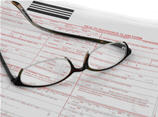Medical Billing Collection

Good medical billing collection procedures improve cash flow and contribute to the financial success of your medical practice. The following tips keep your Accounts Receivable in line and make the overall job easier and less time consuming.
Be sure to read all these great tips, then check out our very best patient collections tool of the trade.
Be pro-active and improve your cash flow
You know the saying...an ounce of prevention is worth a pound of cure. Here are some things you can do on the front end so you don't have to spend so much time on the back end. They will help you with both insurance and patient collections.
Obtain complete demographic and insurance information from your patient.
Your receptionist should verify that your patients complete demographic forms in their entirety. This eliminates having to call the patient later. A copy of the insurance card is a must and a copy of the patient license is also a good idea.
Make it a policy to obtain your patient's social security number.
I have made this a separate tip just because it is so important. Patients are reluctant to give out their social security numbers for obvious security reasons. However, you need to educate the patient that many insurance companies still use the social security number as a means of identification. What if the insurance card is outdated? The social security number often serves as a substitute for the policy number.
In addition, collection agencies will tell you it is much easier to go after an unpaid patient balance when you have the social security number.
Reassure patients that your practice maintains the privacy of their medical information in accordance with HIPAA regulations, which includes their social security number.
At every patient encounter, ask if there has been an address or insurance change.
This is an important medical billing collection rule and it is not practiced often enough. These days, patients change insurance carriers frequently especially at the beginning of the year. Implementing this procedure avoids claim rebills and returned patient statements due to incorrect addresses. You would be surprised how much this helps with maintaining the cash flow of the practice.
Check eligibility and benefits on new patients.
When medical office staff tell me they don't have time to check eligibility and benefits, my response is, the time you don't take on the front end will be doubled on the back end in the collections process.
Some medical billing software offers automated eligibility that is integrated in their systems. While this feature isn't perfect yet, it can save you time.
You can also take advantage of the insurance company websites that are available to check benefits and eligibility when you can.
Naturally, this is easier said than done especially in a busy practice. But, I would do it where possible especially if the insurance information is unfamiliar or vague.
Collect copays and deductibles at the time of service.
This medical billing collection tip is mentioned in several places on this site because it is so important. If you have to mail a patient statement to collect a $5.00 copay, you've lost money. Posting a sign saying copays are due at the time of service is a good idea, but, your best asset is a receptionist that is cheerful but no nonsense about collecting money. Some patients can be pretty slippery characters.
I've seen some practices that charge a $5-$10 statement fee in addition to the copay if a statement has to be sent. Ask your local AMA office about implementing this practice.
Medical billing collection tips for insurance billing
Process your claims daily and use electronic billing and remittance for all carriers possible.
The sooner the insurance company pays you, the better. It is well known that the longer the time between the patient encounter and when the statement is sent, the less likely
you will be paid.
In addition, if you are not checking eligibility and benefits, you want to find out as soon as possible what the insurance company is paying before the patient comes back for subsequent visits.
Electronic billing and remittance makes the turnaround time faster.
Delay claims billing at the beginning of each year.
Patients have new deductibles to meet at the beginning of the year. By holding claims back for a few weeks, deductibles may more likely be met so you can collect from the insurance company and not have to bill the patient and wait for the payment.
Do timely insurance follow-up.
This is where most practices fall down on the job because medical billing collection is so time consuming and, quite frankly, it can be a pain in the neck to do. It is also the easiest task to let fall through the cracks because there are so many other urgent tasks at hand.
As most good medical billers know, delays in follow-up can result in loss of payment due to lack of timely filing. What if you sent a claim to the wrong carrier? The error may be through no fault of your own. The carrier that you should have sent the claim to may have a 60-90 day timely filing limit.
If the timely filing period has expired, you can appeal the claim in writing and explain what happened. However, this process is time consuming and, in this scenario, the appeal will most likely be denied anyway. In the end, you will have to write off the balance because you cannot bill the patient.
Timely follow-up is one of the most important of all medical billing collection strategies. Insurance companies use a variety of bureaucratic stumbling blocks to avoid payment. You can usually overcome them if you follow-up on time.
Don't just rebill claims. Pick up the phone and call the carrier.
I see this happen a lot in medical offices. If you bill a claim and haven't received a payment or any notification from the insurance carrier, rebilling the same claim isn't going to help. Don't get me wrong. If you see an obvious error that you missed, by all means fix the mistake and rebill it as a corrected claim.
However, if you find nothing obviously wrong with the claim, simply rebilling it is usually a waste of time. There are exceptions to this, but for the most part, it's best to call the carrier.
Maybe there is a discrepancy in the patient name or date of birth. Perhaps the claim is pending co-ordination of benefits information from the patient. You won't find out this information without making that call.
You can also use insurance carrier websites for claim inquiries and e-mail your questions as well.
If you are having difficulty getting paid from an insurance company, involve your patient in the process.
I'll use a real life example to demonstrate:
The medical biller at an ophthalmology practice received a written authorization for a patient surgical procedure. She billed the insurance company for the procedure but it was denied for no authorization. Despite repeated phone calls to the insurance company, the claim remained unpaid.
At this point, I advised the medical biller to send a statement to the patient with a letter explaining the situation and ask the patient to call the insurance company to resolve the matter.
The provider may be contracted with the carrier, but where due diligence has been done, the patient is ultimately responsible for the bill.
This is an important medical billing collection rule: involving the patient can get the matter resolved more quickly. Insurance companies are much more responsive to patients than providers. If needed, offer to write a letter on the patient's behalf and have the patient sign it.
Generally patients feel it is the medical office's responsibility to collect from the insurance company, however, they need to be educated about this. Unless the carrier is Medicare or an HMO plan, insurance billing is a courtesy to the patient and they need to realize this.
Even if you are contracted with an HMO, as long as you have fulfilled your billing obligations, you should have no qualms about turning the matter over to the patient.
It is important to document all conversations with insurers including date, time, person's name, and conversation.
Patient collection tips
If your software includes this feature, use the cycle billing method to bill patient statements.
Most offices send out statements the same time each month. "Cycle billing" your statements is actually a better method to use if your software supports it. This functionality gives you the capability to print statements on a more timely basis.
For example, let's say you print your statements weekly. Your statement run will include new statements based on EOB postings since the last week plus all statements for unpaid transactions billed 30 days ago (or any number of days you desire.)
This is a good medical billing collection feature because it reduces the time between the patient encounter and the delivery of the statement, thus improving your chances of reimbursement.
Print remainder statements for every patient on the schedule each day.
This is a good idea if the medical biller has the time to do it. At a minimum, you could print the statements for patients with past due balances.
Attach the EOB to a statement if you anticipate difficulty collecting from the patient.
Some patients will call and complain no matter what, so I wouldn't go through the effort to do this all the time but occasionally it is a good idea if the insurance carrier pays an amount different than expected.
When it comes to patient collections, your policy should be 1,2,3, and you're out.
As a general rule, I send out three statements. If payment is not received by the third statement, I turn the account over to a collections agency.
I stamp the second statement past due. The third statement is stamped for collections action. You can ask your collection agency the proper wording to use. Generally, the warning will prompt the patient to pay.
After the given grace period, you can follow up with a phone call. A caution here. Due to HIPAA regulation, the patient has the right to request limitations on telephone messages. If you have to leave a message, you are say you are calling about a billing matter and ask the patient to return the call. This gets the point across without violating patient privacy. If you receive no response, then turn the account over to collections.
Be sure to flag the patient's account of the action taken. Most software has a note feature that will appear if the receptionist schedules a subsequent appointment for the delinquent patient.
If you have a large volume of patient statements, consider sending electronic statements.
We use Billflash to send statements. We upload a batch of statements to their website. The statements can be sent by mail, email, or text. Patients can view and pay their bills securely online. This is a great feature that helps to improve collections.


